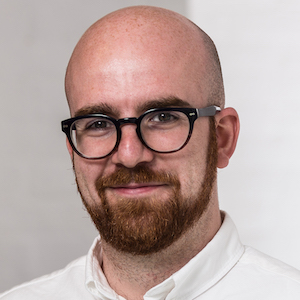
How much do we really know about digital twins? What should the built environment sector do to develop them efficiently and to make the best and most appropriate use of them? Dean Douglas has been researching digital twins for his PhD and here he answers these questions.
Three years is a long time to spend dedicated to a single project, but I have done just that. For the past three years, I have been working on my PhD at Northumbria University with BIM Academy. Part of my research is to understand what digital twins are, what we as an industry need to do to realise our ambitions of creating them and, just as important, how to reap the rewards they offer.
Below I share my top five learnings so far.
1. New skills
Already within the industry, we have a very diverse range of professional backgrounds and expertise that come together to deliver projects on a continually growing scale, projects that are becoming increasingly more complex.
Digital twins require that we supplement the professions of the industry’s workforce even further, suggesting we need to expand our horizons to begin to incorporate what may have previously been considered alien into the mainstream.
We need to be looking at how we incorporate data scientists, computer programmers, data analysts and app developers and the list goes on.
We need these people and their skills to aid us in creating the digital tools and processes that help us push the digitalisation agenda, not only within our teams and organisations, but also as an industry. Having their expertise at hand within organisations will provide unrivalled collaboration and knowledge-sharing in both directions, allowing for teams to have a first-hand role in shaping the future tools that they will use.

“We need to be looking at how we incorporate data scientists, computer programmers, data analysts and app developers into the industry’s workforce.”
2. Not just technology
As an industry we often cite the rhetoric of “beware of the snake oil salesman”. It is all too easy to be reeled in by flashy visuals and companies offering you the world. But it is important to remember that while there are numerous digital twin suites and solutions available, due to the bespoke nature of digital twin development, you are unlikely to find all the answers in a single off-the-shelf solution.
This is not to rubbish the solutions available out there: many offer a variety of capabilities and tools to aid you in your development of a digital twin. However, we should never sacrifice part of our purpose for digital twin development for the sake of the lack of functionality in a single suite or solution.
After all, a digital twin is not any single technology or platform: it seeks to fulfil its intended purpose by bringing together the necessary data, people, systems and processes, and technology, which leads on nicely to my next point.
3. We have the ingredients
We have an inordinate amount of data, generated from everything we do. We produce data, we store data, we visualise data, we don’t look at data, we lose data, we even sometimes hide data!
Historically, what we have done is maintain data silos and only sought to engage others in its dissemination and use it where there was tacit understanding of where physical systems or processes interacted.
In the last decade or so, we have come a long way in storing and analysing our data, making it more accessible, more sharable and, most importantly, more interrogatable. It is this that has led us to digital twins. Data is a key ingredient in the creation of a digital twin, but this does not mean that to develop a digital twin, we need to rush out and harvest whole new datasets about our assets.
Let’s not waste our time and money collecting new data. Instead, let us understand what we already have and how we can better use it first. Then will we be in a better position to pinpoint where the gaps are and how best to fill them.
4. Purpose
“Let’s not waste our time and money collecting new data, instead let us understand what we already have and how we can better use it first.”
An organisation’s digital twin purpose is often referred to as a guiding principle for their efforts towards the creation of their own digital twin. And I’m going to tell you no different – in fact it forms a key piece of the framework I have created in my research.
What I do want to say about digital twin purpose is that while the purpose does guide the programme of development for the digital twin, there is an element of sculpting what needs to be done to the purpose itself. As with any objective, we have to make sure that it is attainable.
To this end, we need to ensure that our purpose reflects the capabilities that digital twins have to offer and considers what elements of the purpose can be answered by the first iteration of a digital twin.
It is important that organisations see digital twin development as a cyclical loop of innovation, with the continued expansion and upgrading of the digital twin’s capabilities and resulting benefits, better meeting the intended purpose with each cycle.
5. Not just us
I think we would be rather naive to think that the built environment was the first and only industry seeking to develop digital twins, especially with those so regularly referenced reports that detail the built environment’s slow pace of innovation.
There are numerous industries both far from our own and those that we consider aligned with ours that are developing digital twins and, in some cases, have been doing so for years, including aerospace, manufacturing, automotive, medicine and agriculture.
But let us use that to our advantage. We don’t have to relive the mistakes of those who have gone before us. We can learn from their endeavours and build on their hard work to further our own.
For the past three years I have been fortunate to research a topic at the forefront of innovation in the built environment. I’ve been lucky enough to experience it from both an industry perspective from BIM Academy and in academia within Northumbria University. I hope that in sharing some the points here I have given you food for thought that can help you shape your journey towards a digital twin.
If you are interested in hearing more about my research or if you want to be involved, get in touch: [email protected]
Dean Douglas is a researcher at BIM Academy
Don’t miss out on BIM and digital construction news: sign up to receive the BIMplus newsletter.











